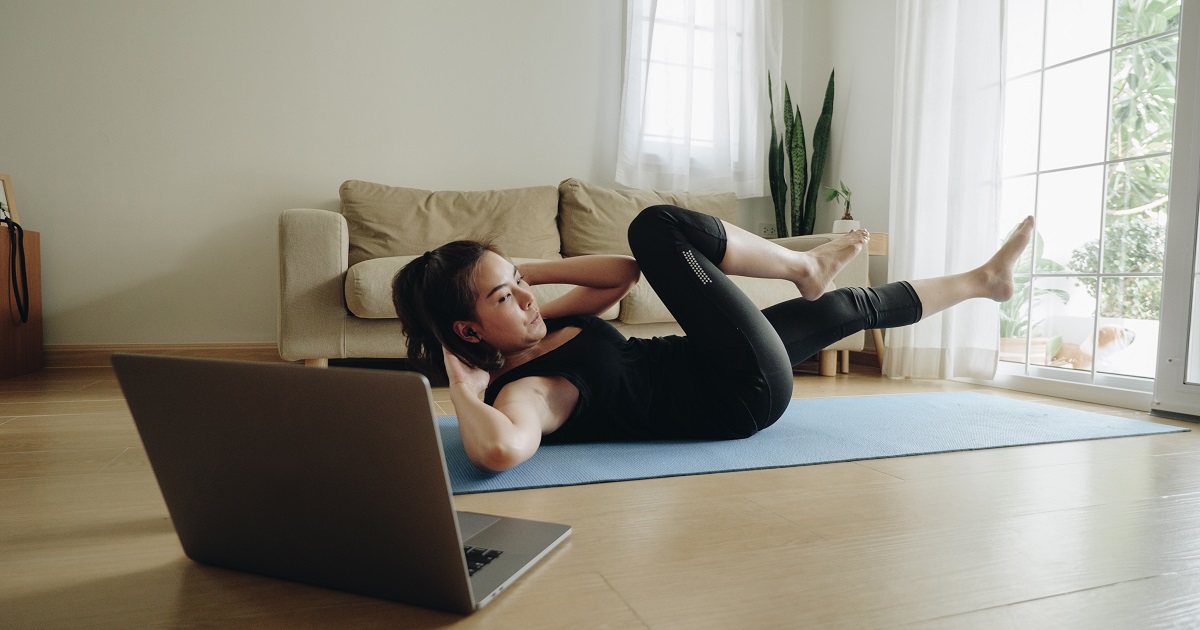Summary: Gyms and fitness centers were among the many types of businesses forced to shut down during the coronavirus pandemic. Find out how the fitness industry will need to adapt to the changes the crisis caused in the years ahead. Are Gyms Safe During the Coronavirus Pandemic?
Exercise offers a variety of benefits to people of all ages, including improved cardiovascular health, stronger bones and better flexibility. Getting the heart rate elevated daily can prevent an array of chronic conditions, like obesity, heart disease, diabetes, osteoporosis and more. Plus, exercise also provides mental health benefits, improving one’s mood and decreasing stress levels.
 Relieving stress
Relieving stress has been top of mind for many during the COVID-19 pandemic. Unfortunately for those that use exercise to combat stress, gyms and fitness centers were among some of the first businesses to close their doors at the beginning of the outbreak. As the crisis continues, it is becoming clear that the fitness industry won’t return to the way it operated before anytime soon.
Coronavirus and the Gym: Adapting to a New Workout Routine
In 2019, it was estimated that fitness was a
$34 billion industry, and 20% of Americans had a membership to a gym or fitness center. As the coronavirus crisis swept the nation in early 2020, statewide orders shut down not only restaurants, bars and hair salons but also both large and small gyms and fitness centers. Americans were left without a place to physically visit to stay in shape, so many turned to creating home gyms to burn their daily calories.

Companies like Peloton, who offer in-home workout equipment such as bikes and treadmills as well as a digital only membership for online strength training, yoga, cardio classes and more, continued to thrive throughout the pandemic. Meanwhile, just like restaurants adjusted to
take out and delivery services to help maintain a customer base, gym and fitness center owners scrambled for ways to keep their businesses afloat, too, including:
Virtual and digital workouts and classes
Following examples of larger fitness companies like NordicTrack, Beachbody and Peloton, smaller gyms have turned to offer virtual classes for a fee via YouTube, Zoom, or other online platforms. Some choose to stream workouts live, while others film them for customers to utilize at their convenience. In a survey conducted by
Mindbody, a “technology platform that connects the world to wellness,” 46% of survey participants stated that even after gyms and fitness centers reopen, they intend to make virtual classes a regular part of their routine.
There are some benefits to these online workouts, too, as they can be taken at the customer’s convenience throughout the day and do not require a commute – some of the common excuses people find to avoid working out.
Outdoor classes
Another creative way gyms and fitness centers are staying open is by offering classes in an outdoor space, which allows for easier social distancing. Rooftop yoga classes have become a popular option for yogis across the country throughout the summer months. Other types of fitness centers may choose to provide parking lot Zumba or high-intensity interval training (HIIT) classes, or boot camp classes in a local park. Customers still get the shared workout experience they may be missing by taking only solo, virtual classes, while still feeling safer and maintaining their distance from other participants in an unenclosed space.

The Future of the Fitness Industry
Even as the shutdown orders lifted, many gyms face an array of challenges as they begin to welcome customers back inside. Adhering to social distancing guidelines, constant sanitizing of equipment, mandating face masks and more can be a struggle for many smaller gyms and fitness centers, who also may find themselves short-staffed during these times.
The CDC has specific
recommendations for the fitness industry that employers can use to keep their customers and employees safe. Along with creating a COVID-19 workplace health and safety plan, there are also other things gyms and fitness centers can do to prevent the spread of the virus. For example, all equipment should be placed at least six feet apart to maintain social distancing guidelines, and arrows can be placed on the floors to direct the flow of foot traffic. Handwashing or hand sanitizer stations should be placed throughout the facility, and the building should be well-ventilated.
The good news is that many people continue to make their physical and mental health top priority, especially during the coronavirus pandemic. The fitness industry will need to adapt, just like many other types of businesses, to these ever-changing times.
AmTrust is Here to Help Small Businesses
AmTrust is here to help our small business insureds throughout the COVID-19 pandemic. We have a dedicated resource center to
assist small businesses as the country reopens and a library of
coronavirus resources to help our appointed agents and small business insured stay informed, safe and healthy throughout these difficult times. For more information on our
small business insurance solutions, please
contact us today.
 This material is for informational purposes only and is not legal or business advice. Neither AmTrust Financial Services, Inc. nor any of its subsidiaries or affiliates represents or warrants that the information contained herein is appropriate or suitable for any specific business or legal purpose. Readers seeking resolution of specific questions should consult their business and/or legal advisors. Coverages may vary by location. Contact your local RSM for more information.
This material is for informational purposes only and is not legal or business advice. Neither AmTrust Financial Services, Inc. nor any of its subsidiaries or affiliates represents or warrants that the information contained herein is appropriate or suitable for any specific business or legal purpose. Readers seeking resolution of specific questions should consult their business and/or legal advisors. Coverages may vary by location. Contact your local RSM for more information.